When faced with a dead car battery, the traditional solution of jump-starting with cables might not always be an option if there’s no other vehicle around to assist. Fortunately, car owners can employ alternative methods to get their vehicles running when they’re in a pinch.
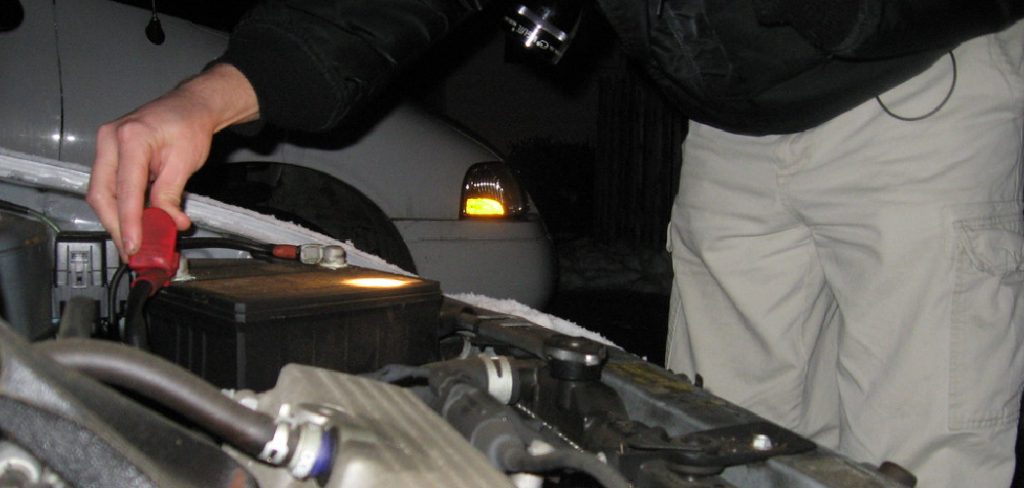
This guide on how to start a dead car without jumping will walk you through the necessary steps to start a dead car without it, using tools and techniques that can help you out in this common automotive predicament.
What is a Dead Car Battery?
A dead car battery is a common occurrence, particularly during extreme weather conditions or when your vehicle has been left unused for an extended period. When the battery is unable to provide enough power to start your car’s engine, it can be considered “dead.”
This can happen due to various reasons such as leaving lights on overnight, using electronics while the engine is off, or simply an old and worn-out battery. It’s important to identify the cause of a dead battery and take necessary precautions to avoid it in the future.
Why Do I Need to Start a Dead Car Without Jumping?
Jump-starting a dead car battery requires another vehicle and jumper cables, which may not always be available in an emergency situation. It also requires some knowledge of connecting the cables in the correct order to avoid damage to both vehicles.
Additionally, jump-starting can be dangerous if not done properly, as it involves handling live electrical components. Therefore, knowing how to start a dead car without jumping can come in handy and save you time and effort in such scenarios.
Common Reasons for a Dead Battery
- Leaving Headlights, Interior Lights, or Any Other Electronics on for an Extended Period
- Faulty Alternator That Does Not Charge the Battery Properly
- Corroded or Loose Battery Connections
- Extremely Cold Weather Conditions That Can Drain the Battery’s Power
- Old and Worn Out Battery That Needs Replacement
- Not Driving the Vehicle for an Extended Period
Tools You’ll Need
In order to start a dead car without jumping it, you’ll need a few essential tools. These include:
Jumper Cables (Optional)
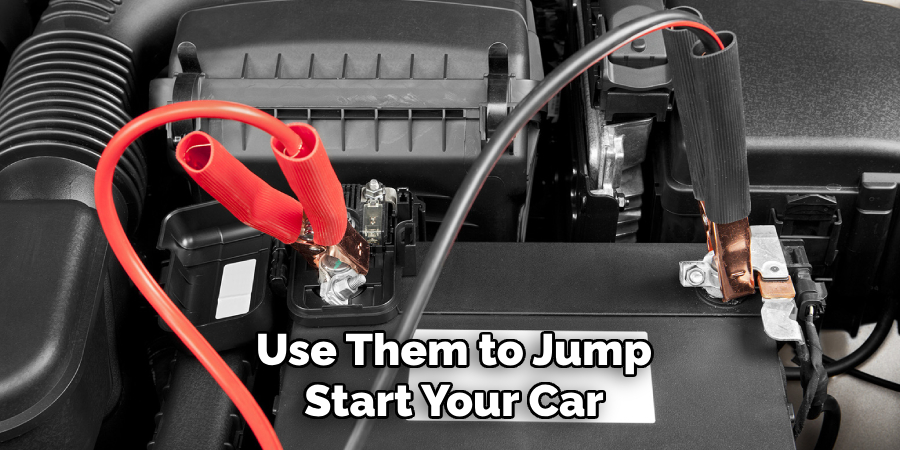
While jumper cables are not necessary, they can still be useful in certain situations. If you have access to a working vehicle and jumper cables, you can use them to jump-start your car following the correct procedure.
Battery Charger
A battery charger is a device that charges your car’s battery without needing another vehicle. It plugs into a standard outlet and delivers a low current charge to the battery, gradually bringing it back to life.
Portable Power Pack
A portable power pack is a self-contained jump-starter that can be used without any additional tools or vehicles. It contains a rechargeable battery and jumper cables, making it a convenient option for starting a dead car.
Battery Booster Pack
Similar to a portable power pack, a battery booster pack is a compact device that can be used to jump-start your car without the need for another vehicle. It typically has built-in jumper cables and an internal battery that provides the necessary power.
11 Step-by-step Guidelines on How to Start a Dead Car Without Jumping
Step 1: Check for Signs of a Dead Battery
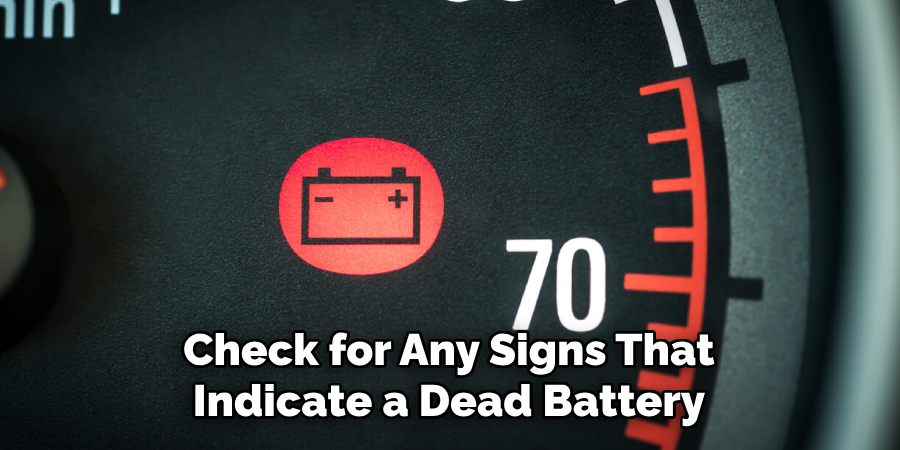
Before attempting to start your dead car, check for any signs that indicate a dead battery. This could include dim or flickering headlights, difficulty starting the engine, or no response when turning the key in the ignition. If any of these symptoms are present, it’s likely that the battery is dead. But it’s always a good idea to check the battery voltage using a multimeter if one is available.
Step 2: Turn Off Any Electronics
If your car’s interior or headlights were left on before the battery died, make sure to turn them off completely. This will prevent any further drain on the battery and help preserve its remaining charge. It’s also a good practice to disconnect any aftermarket electronics or accessories that may be using power from the battery. You can reconnect them after the car is running again.
Step 3: Pop the Hood and Locate the Battery
Before proceeding, make sure your car is in park or neutral with the handbrake engaged for safety. Next, pop open the hood of your vehicle and locate the battery. It’s typically found near the front of the engine compartment on either side. But if you’re unsure, consult your car’s manual for the exact location.
Step 4: Clean the Battery Terminals
If there is visible corrosion or buildup on the battery terminals, use a wire brush or sandpaper to clean them off. This will help improve the connection between the battery and its cables, allowing more power to flow through. Make sure to wear gloves and protective eyewear when handling the battery and its terminals. Otherwise, you may end up with some acid on your hands or face.
Step 5: Connect the Positive Charger Cable to the Positive Terminal
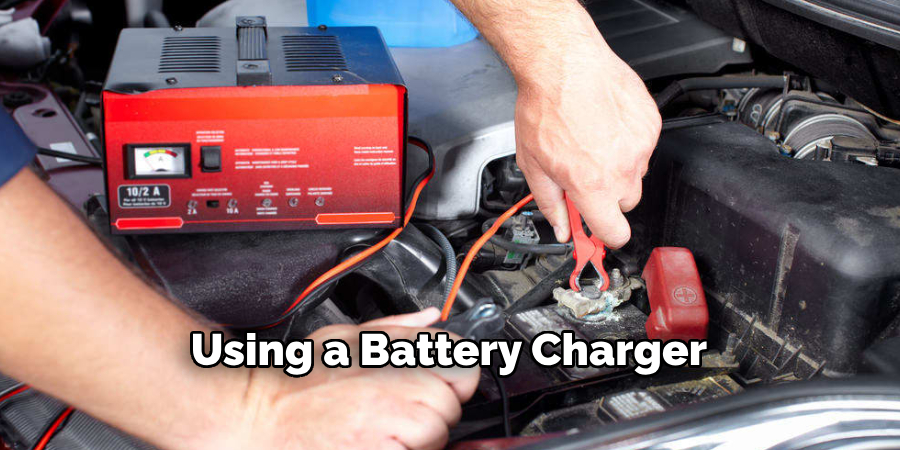
If you’re using a battery charger or booster pack, connect the positive charger cable to the positive terminal of your car’s battery. The positive terminal is marked with a plus sign and is usually red in color. Be careful not to touch any metal with the cable ends as it may cause sparks. You can also use a battery terminal clamp if your charger has one. It will provide a more secure connection.
Step 6: Connect the Negative Charger Cable to a Grounded Metal Surface
Next, connect the negative charger cable to a grounded metal surface on your car. This could be an unpainted bolt or screw on the engine block or any other metal part that is not directly connected to the battery. Make sure the surface is clean and free of rust or corrosion for a good connection.
The negative terminal of the battery should be avoided as it may cause sparks when connecting. It’s also a good idea to keep the negative and positive charger cables as far apart from each other as possible.
Step 7: Turn On the Charger
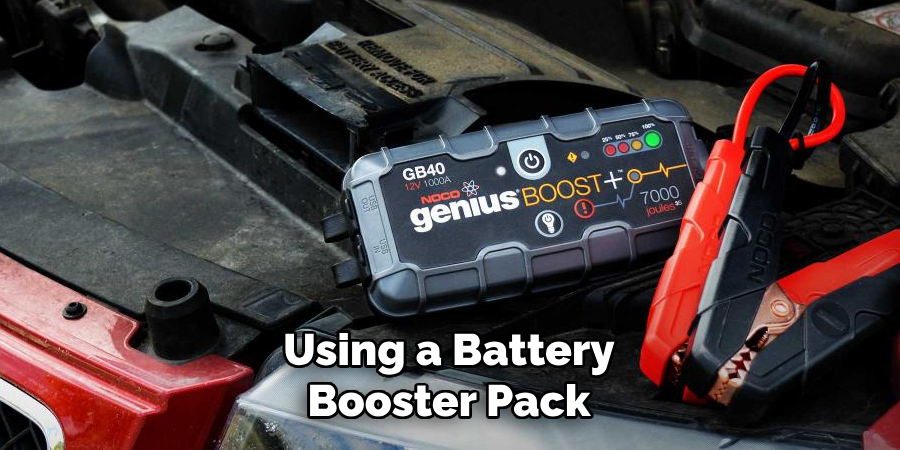
If you’re using a charger, plug it into a standard outlet and turn it on to begin charging. Follow the instructions on your particular charger for best results. If using a battery booster pack, simply turn it on and wait for it to establish a connection with the dead battery. Most modern boosters have automatic safety features that prevent any sparks or arcing from occurring.
But it’s still important to follow proper safety measures. The battery may take some time to charge, so be patient and wait for the charger or booster to do its job. It’s also a good idea to periodically check the battery voltage using a multimeter if available.
Step 8: Attempt to Start Your Car
After some time has passed, try starting your car by turning the key in the ignition. If it doesn’t start after a few attempts, let it sit for a few minutes longer and try again. It’s possible that the battery needs more time to charge before the car can start. If your car still doesn’t start after multiple attempts, you may need to seek assistance from a professional mechanic.
But if it does start, let the engine run for a few minutes to allow the alternator to charge the battery further. The engine should continue to run smoothly, indicating that the battery is charging properly.
Step 9: Disconnect the Charger or Booster Pack
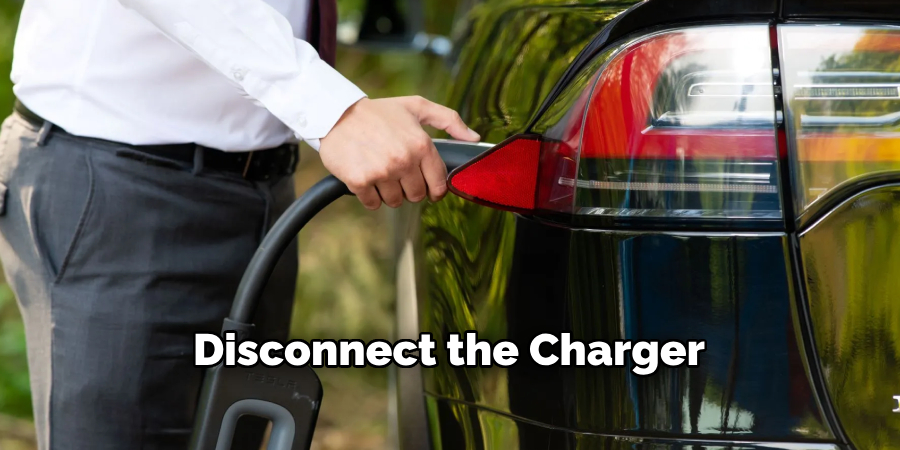
Once your car is running, carefully disconnect the charger or booster pack by removing both cables in reverse order of connection. Start with the negative cable and then remove the positive cable. Make sure not to touch any metal surfaces with the cable ends as it may cause sparks. But if you’re using a booster pack with built-in cables, simply turn it off and disconnect it from the battery.
This will prevent any sparks from occurring. Do not let the cables touch each other after disconnecting them. It’s also a good idea to let the car run for a few minutes longer to ensure the battery is fully charged before hitting the road.
Step 10: Reconnect Any Disconnected Electronics or Accessories
If you disconnected any electronics or accessories before attempting to start your car, now is the time to reconnect them. Make sure they are not using any power and are turned off before plugging them back in. Otherwise, it may cause a drain on the battery again. You can also turn on your headlights and interior lights to make sure they are working properly.
But if they are still not working, it’s possible that the battery needs to be replaced. You can also take your car for a short drive to fully charge the battery.
Step 11: Drive Your Car for at least 20 minutes
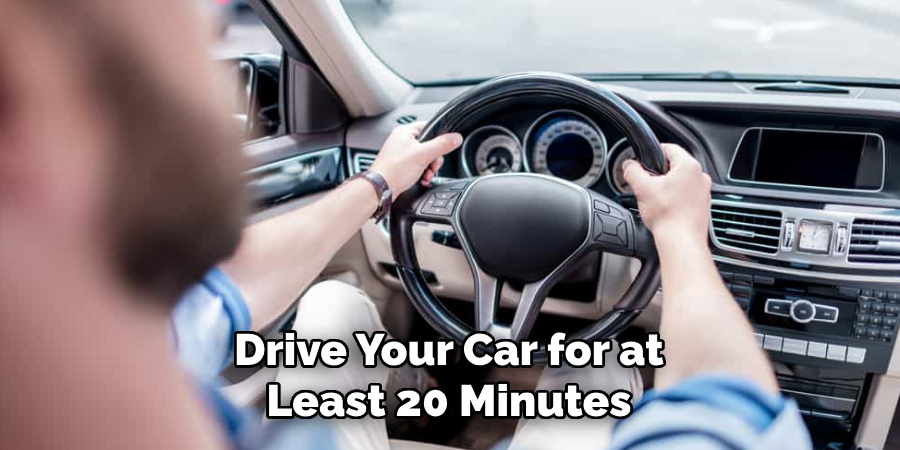
To allow your car’s alternator to fully charge the battery, it’s recommended to drive your car for at least 20 minutes. This will help replenish any lost charge and ensure that the battery is ready for future use.
If you only take short trips, make sure to drive your car for longer periods occasionally to keep the battery charged. It’s also a good idea to get your battery tested regularly to make sure it’s in good condition. This will help prevent any unexpected dead battery situations in the future.
Following these steps on how to start a dead car without jumping can help you safely jumpstart your car and get back on the road in no time. Just remember to always follow proper safety precautions and consult a professional if you encounter any difficulties. By taking care of your car’s battery, you can avoid potential issues and keep your vehicle running smoothly for years to come.
Testing and Quality Assurance
To ensure that your car’s battery is functioning properly and won’t leave you stranded, it’s important to regularly test and maintain it. You can do this by performing simple tests such as checking the battery voltage with a multimeter or using a battery load tester to check its capacity. It’s also recommended to clean any corrosion or buildup off the terminals and keep them tight. Regularly driving your car for longer periods can also help maintain a healthy charge in the battery.
If you notice any issues with your battery, such as slow cranking or frequent dead batteries, it may be time to replace it. Proper maintenance and testing will help keep your car’s battery in good condition and prevent unexpected breakdowns on the road. So, make sure to regularly take care of your car’s battery to keep it running smoothly.
Advanced Techniques for Battery Maintenance
In addition to basic testing and maintenance, there are also advanced techniques that can help prolong the life of your car’s battery. One technique is called equalization, which involves occasionally overcharging the battery to break up any sulfate buildup on the plates.
This can help restore lost capacity and improve the overall health of the battery. Another technique is using a desulfator, which is a device that sends high-frequency pulses through the battery to break up sulfate crystals and prevent buildup.
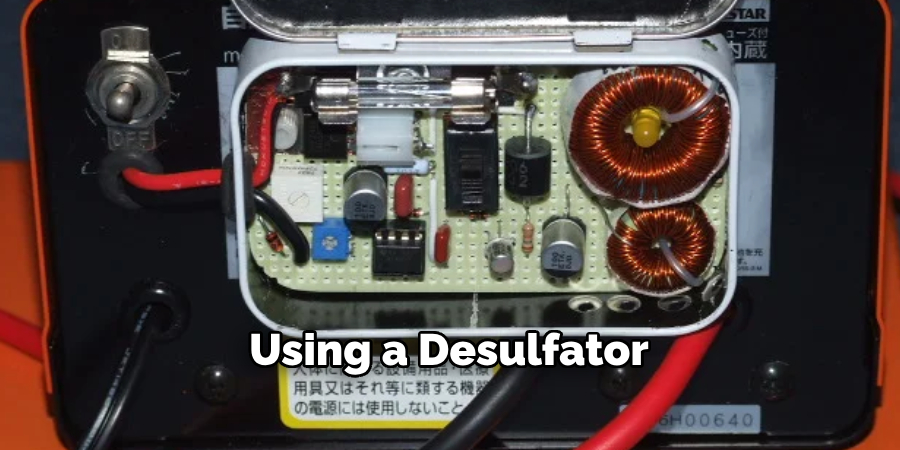
These advanced techniques should only be performed by experienced individuals or professionals, as they can be dangerous if not done correctly. However, incorporating them into your battery maintenance routine can help extend its lifespan and save you money in the long run.
Common Challenges and Solutions
While jumpstarting a dead car battery is usually a simple process, there can be challenges that may arise. Some common challenges include poor connections between the cables and battery terminals, weak or corroded terminals, or faulty alternators. To ensure success in jumpstarting your car, make sure to clean any corrosion off the terminals and keep them tight.
If you are still having trouble, try using a different set of jumper cables or seek assistance from a professional mechanic. It’s also important to have your alternator checked if you experience frequent dead battery situations, as it may not be charging the battery properly.
By being prepared for potential challenges and addressing them promptly, you can effectively jumpstart your car and prevent future issues. Overall, taking care of your car’s battery and knowing how to jumpstart it are essential skills for any driver. By following proper techniques, regularly testing and maintaining the battery, and being prepared for potential challenges, you can keep your car running smoothly and avoid unexpected breakdowns on the road.
Additional Tips and Precautions
- If You Don’t Have Access to a Battery Charger or Booster Pack, You Can Also Jumpstart Your Car Using Jumper Cables and Another Vehicle With a Charged Battery. It’s Important to Follow Proper Safety Measure and Connect the Jumper Cables in the Correct Order.
- If Your Car’s Battery Keeps Dying Frequently, It May Be a Sign of a Larger Problem. Make Sure to Have Your Car Checked by a Professional Mechanic to Prevent Any Potential Issues.
- It’s Always a Good Idea to Keep an Emergency Kit in Your Car That Includes Items Like Jumper Cables, Battery Chargers, and Other Tools That May Come in Handy During a Dead Battery Situation.
- If You Are Unsure About Jumpstarting Your Car or Do Not Feel Comfortable Doing It Yourself, It’s Best to Seek Assistance From a Professional Mechanic. They Have the Knowledge and Experience to Safely Handle These Situations. Overall, Proper Maintenance and Handling of Your Car’s Battery Can Help Prevent Any Unexpected Issues and Keep Your Vehicle Running Smoothly. So Make Sure to Follow These Steps and Precautions to Ensure a Safe and Smooth Driving Experience. Keep Your Battery Charged and Happy Travels! Happy Driving!
Conclusion
In conclusion, while jump-starting a dead car battery may be the most common and straightforward method, it’s not always feasible. By following the steps outlined in this guide, you can successfully start a dead car without jumping it and get back on the road in no time.
Remember to maintain your car’s battery regularly and keep an emergency kit with alternative starting methods just in case. With the right tools and knowledge, you can handle any dead battery situation without relying on a jump-start from another vehicle. Stay prepared and stay safe!
So, if you ever find yourself with a dead car battery and no way to jump-start it, don’t panic – simply follow these steps and get back on the road in no time. Your car will thank you for it! Additionally, always remember to dispose of old car batteries properly and recycle them to protect the environment. Let’s do our part in keeping our planet clean and healthy. Keep these tips in mind on how to start a dead car without jumping.

About
JeepFixes Team is a skilled author for Jeep Fixes, bringing 6 years of expertise in crafting a wide range of jeep fixes. With a strong background in jeep fixes work, JeepFixes Team’s knowledge spans various types of fixtures, from decorative pieces to functional hardware, blending precision with creativity. His passion for jeep fixes and design has made him a trusted resource in the industry.
Professional Focus:
Expert in Jeep Fixes : JeepFixes Team aesthetic specializes in creating durable and innovative jeep fixes, offering both appeal and functionality. His work reflects a deep understanding of jeep fixes techniques and materials.
Sustainability Advocate : He is dedicated to using sustainable practices, ensuring that every fixture is crafted with eco-friendly methods while maintaining high-quality standards.
In his writing for jeep fixes, JeepFixes Team provides valuable insights into the latest trends, techniques, and practical advice for those passionate about jeep fixes, whether they are professionals or DIY enthusiasts. His focus on combining artistry with engineering helps others discover the true potential of jeep in design.
